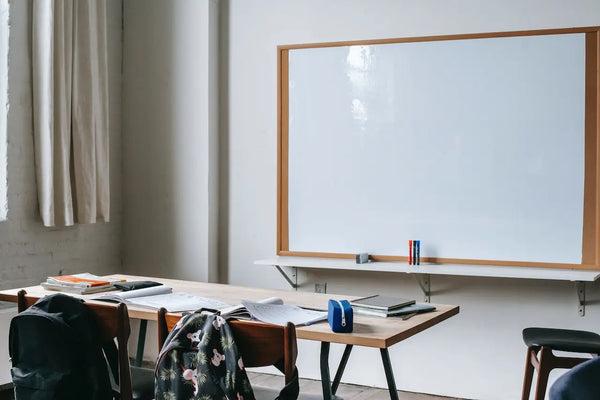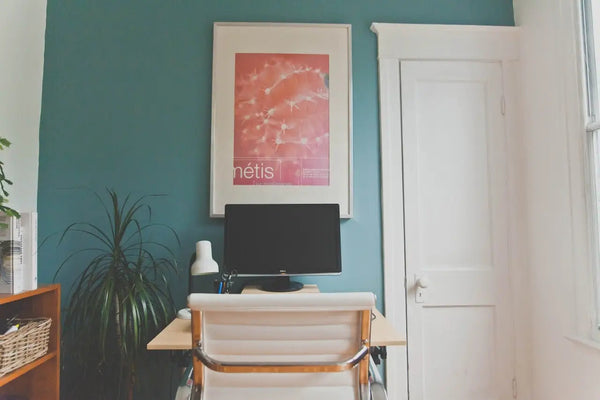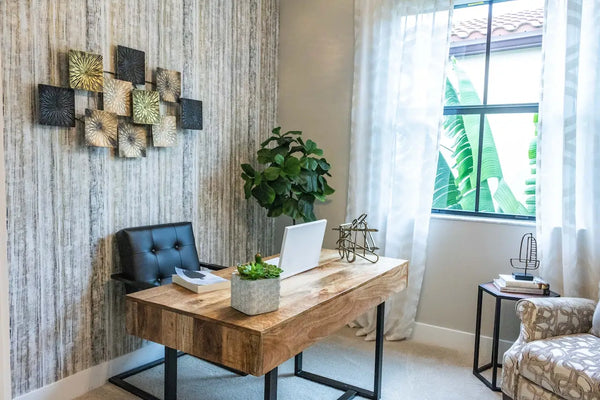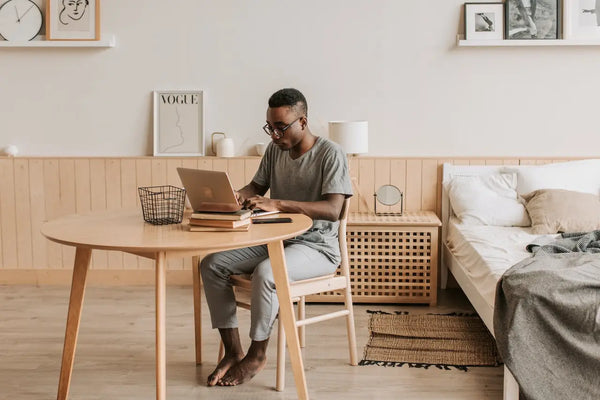Creating a permanent homework solution
A simple guide for creating a sustainable remote working environment if you plan to work permanently.
The uncertainty of office work during the Pandemie has been replaced by a growing desire to have work remotely an integral part of the ecosystem in the workplace. Although many home workers have settled with temporary workplaces and have put together hasty work routines, a more permanent solution is needed to ensure that working from home is sustainable.

Whatever your current home work situation, how much space you have and with whom you share it, there are all kinds of ways in which you can create a sustainable and practical workspace that can benefit your health, well -being and productivity.
Create a routine
Although working from home can offer a certain autonomy in how you divide your day, a lack of workplace structure can cause you to lose your focus, whereby distraction disrupts your productivity at home. Setting up a daily routine is a great way to stay on the right track and to limit procrastination. Everyone's life is different, and in the end it is up to you where you build your routine around, but by removing the need to plan during office hours or to think about things that are not related to work, you can help Reduce stress and improve your daily output.
Some of the most basic things you can achieve are simply out of bed at the same time every day and early enough to be able to shower, dress up, perhaps some exercise (after all, you have saved some time by not commuting). !).
When you go to work, set yourself a number of limits, such as staying offline or not using your phone for at least the first 2 hours of your working day. You can extend your routine throughout the day by setting fixed eating and paukeeping times, assigning certain times of the day to different types of tasks, such as meetings or telephone conversations, or, if you live alone, at least once a day a make social contact. Finish the day by writing down a task list for the next day, so that you have goals to build the schedule for the next day.
On the Verywell Mind website says Rachel Goldman, psychologist and clinical assistant professor at the NYU School of Medicine; "If people do not have a routine or structure in their day, this can cause more stress and anxiety, as well as overwhelming feelings, lack of concentration and focus."

Stay active
Working from home often results in a lot less physical movement. Task work, meetings and phone calls can easily take place without getting out of your chair, and without daily commuting you can easily walk less than 50 steps from the moment you wake up until you get up for lunch. When creating your daily routine, consider recording activities such as walking and talking, regular breaks where you stand upright or walk around, or even take hiking lunches.
These frequent breaks can also be used to do household chores, such as filling or emptying the dishwasher, hanging your clothes to dry or other short, simple tasks that need to be done.
Think of those with whom you live
If you share your external working environment, it is important to respect each other and to establish a comfortable working environment. A way to do this is to treat each other as colleagues during working hours - if people at work do not tolerate it, it does not expect them.
If the space is tight and you only work at a distance part -time, consider a schedule in which you take turns at home or think of ways to better optimize the space. If you only have one special workstation, you may be able to build in a schedule for parts in your routine, so that each of you can use the best desk when you need it the most.
The most important thing is communication - make sure that you are clear when you have planned important video conferences and do not have grievances fell. If you also plan your lunch breaks at the same time, you can share the tasks for preparing food and have the much needed socialization to relax during the day.

Separating your work space from the home room
To keep your work and private life separate, more may be needed than just opening and closing your laptop. Creating a separate working environment in your home will help to generate a sense of productivity and efficiency, while the rest of your house really becomes a place to relax.
The easiest way to do this is to create a special home office, but if there is no space, a strategy is a specific part of a room, away from banks, TVs and other distractions. You can create separation by changes in the decor, physical divorces (such as the backrest of a sofa or a table). If there is really little space, you can also create a workspace that you pack at the end of every day, so that there is really a clear limit between work and playing time.
Try to keep personal activities completely outside your workspace and working time. This will help you to switch immediately to a productivity mentality. If you need a break, consider removing yourself from space - this will also help you stretch your legs and keep your body active.
Another tip is the preparation of rules to prevent regular distraction. This can be particularly important if you have children who are constantly coming in to see you and disrupt your workflow, causing your rhythm to lose your tasks. Communicate openly with your family or housemates to show how important your limits are, and signal particularly important moments when you have to concentrate. If everything else fails, buy headphones with noise reduction to exclude all domestic distractions.

Upgrade your workstation
Having a special workplace with a desk at optimum height and a comfortable and ergonomic chair is one of the best ways to guarantee for a long time and productive working from home. If you have been able to save yourself with the kitchen table and bank, it might be time to assess your options and find a more suitable solution. If you mainly work from a laptop, you must think about using an external mouse, keyboard and monitor to maintain a healthy work attitude and to reduce the chance of developing back or neck complaints. For more information about setting up an ergonomic home office
As always, having a limited amount of space is one of the biggest challenges that people are confronted with in creating the optimum home working space. From the most recent data of the worldwide Reading man survey About distance working even shows that only 44% of home workers have a special office or office, while 25% work from a non-specific location, such as a dining room.
Overview
Stay on a routine
- Make a fixed morning schedule: wake up, shower, dress, eat
- Plan your workload throughout the day
- Have you planned lunch in advance
- Make a to-do list for the next day
- Stay active
Be careful for others in your house
- Plan pauses in
- Finish on time
- Communicate about calls
- Treat your housemates as colleagues
Separate your workspace from your home room
- Create a physical boundary for your workspace
- Implement the design of the workspace to create a productive atmosphere
- Communicate with others in your home to respect your limits
- Keep personal activities outside your workspace - Take breaks out
Upgrade your workstation
- Comfortable & ergonomic desk and chair are central
- Compliment with computer edge equipment to improve posture and comfort
- Work with what you have - the right chair fits well with every office space





